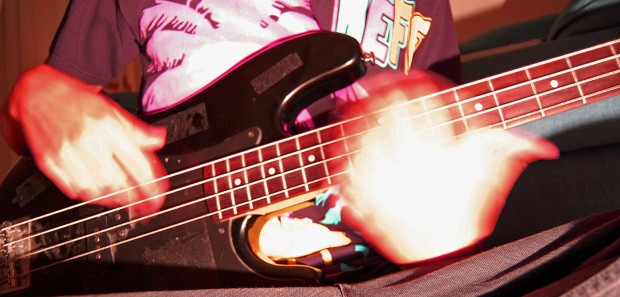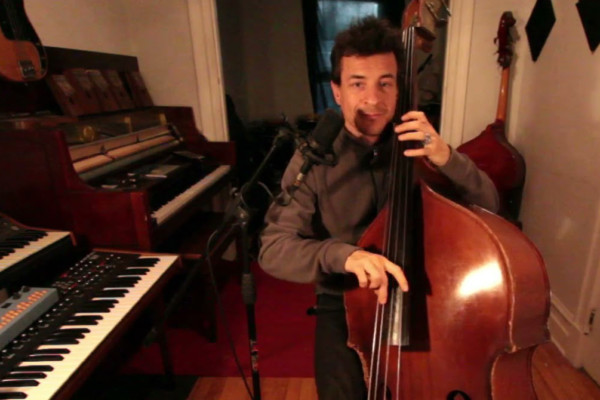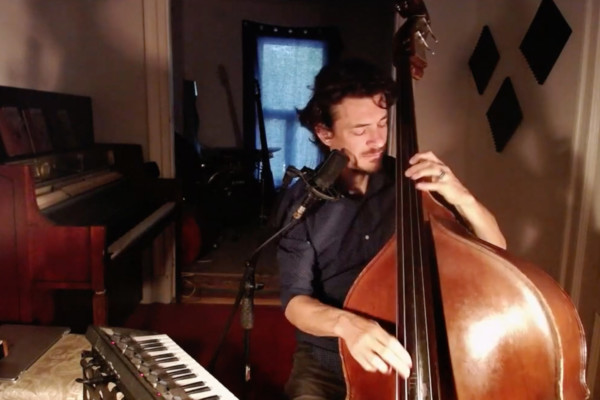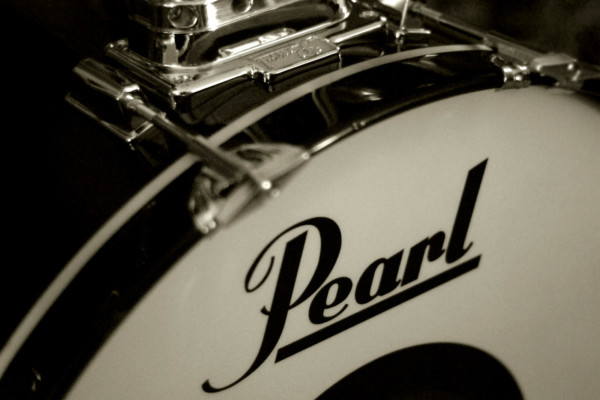Makers of the Melody: Part 3 – Time to Take that Solo

It’s official. You’ve been given the nod from the guitar player and called out by the vocalist… time for a solo. Against your better judgment, you accept and try to switch your thinking from root notes and walking to playing the lead, expressing your thoughts, and showing off your musicality. You’re stepping out of your comfort zone, ready to play above the 8th fret, and excited to have the floor for a few choruses. Now if only you knew where to begin…
In parts one and two of this series on melody, we’ve examined two specific concepts: integrating melody into a bass line and playing the head or melody to a song. Now, let’s talk about soloing. Unlike other instruments, such as guitar, keys, or sax, a bass player’s education doesn’t necessarily revolve around solos. We focus on technique, theory, groove, different styles such as rock, Motown, and jazz, and, perhaps after studying each of those concepts and more, may get to soloing. Our role models aren’t necessarily the ones who step out and play lead… they’re the ones who rock, bring the soul, and move peoples’ feet. So when it’s time to work on our soloing, how do we know what to listen to, if not to the bass?
While there are plenty of amazing bass players and bass soloists out there, I find that the best way to learn about soloing is by listening to other instrumentalists; I say this for a few reasons.
First, bass players have a habit of falling into a couple of soloing “traps.” This includes too-much-technique (when the player relies on a blinding flurry of notes that are relatively inaudible), too-much-slap (when the solo becomes the only place for the player to show off their double thumping), or too-many-scales (when the solo is a bit too scalar and obviously a derivative of an exercise). By listening to a sax or piano solo, you will realize that the patterns driving the solo are quite different from what you may play on a bass. Plus, you probably won’t hear any slapping. Now don’t get me wrong, sometimes a solo is the right time for slapping, but most slap solos are driven by technique and rhythm as opposed to melody.
Second, when we consider a melody, we can’t help but think of singing. Vocalists tend to have a greater handle on melodic phrasing because of their use of breath; wind and brass instruments (sax, trumpet, trombone, etc.) are in the same boat. We can learn a lot from singing a vocal or trumpet solo and then mimicking that on our instrument… the phrasing, articulation, and dynamics will likely be very different.
And third, the techniques used on other instruments, such as a guitar player’s ability to bend notes or a trombonists’ glissando, can certainly be integrated into a bass solo. Let yourself be inspired by what other players do; perhaps you’ll want to work on something specific, such as using chords or broken intervals. Each instrument has a different perspective to offer and you may be able to come up with some interesting techniques of your own by taking on a challenge from other instruments.
Another great way to get started is to transcribe some of your favorite soloists (and all the better if they aren’t bass players). As a self-proclaimed blues enthusiast, I grew up listening to iconic and distinctive musical voices… B.B. King, Albert Collins, Bonnie Raitt, etc. Blues guitar players are known for their identifiable licks, tone, and call-and-response to the melody of the song. This makes for a great example for what you can do as a soloist: develop a unique style, have a distinctive tone, and bring your own interpretation or “response” to the melody. When it comes to soloing, I favor bluesy melodies, bending notes, and utilizing the flat 3rd, 5th, and 7th scale degrees… those musical qualities have shaped my own voice and it’s evident that I’ve spent a lot of time listening to Albert King. The greater variety of music you listen to and the more you pull from different styles and soloists, the more you will be able to develop your own style.
And finally, on the theoretical side of things, think about how you can utilize the non-diatonic notes in the chord progression to help you build a melody in your solo. For example, if you’re playing a song with a I-II7-V7 (C Maj – D7 – G7) progression, try highlighting the F# of the D7 chord. Think of it as a good place to land in your solo; it picks up on the 3rd of the chord will allow you break away from the pentatonic scale. If you can create a melodic phrase that plays off of the 2nd and 3rd scale degrees relating to each chord, then you’re on the right track.
These are just a few ways to begin thinking about melody in your solos; the most important of which is listening and developing your voice. As your style as a bass player has evolved from what you’ve listened to and learned over the years, you personality as a soloist will likely follow the same path. Just remember to steer clear of some of the “bass traps,” pull from many different sources, and listen to the melody in your head.
How do you approach soloing and developing your voice? As always, I’d love to hear your ideas and approach. Please share in the comments.
Ryan Madora is a professional bass player, author, and educator living in Nashville, TN. In addition to touring and session work, she teaches private lessons and masterclasses to students of all levels. Visit her website to learn more!



